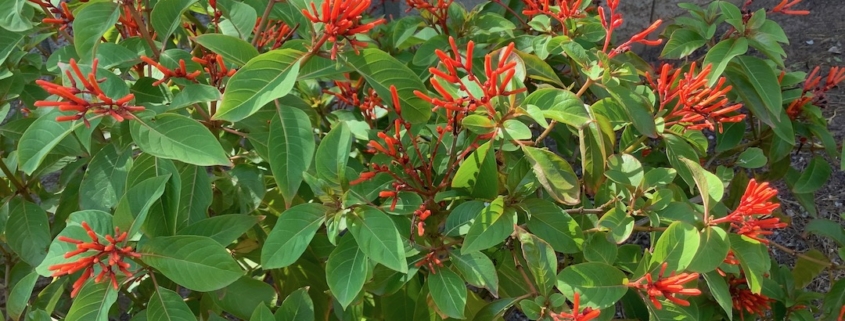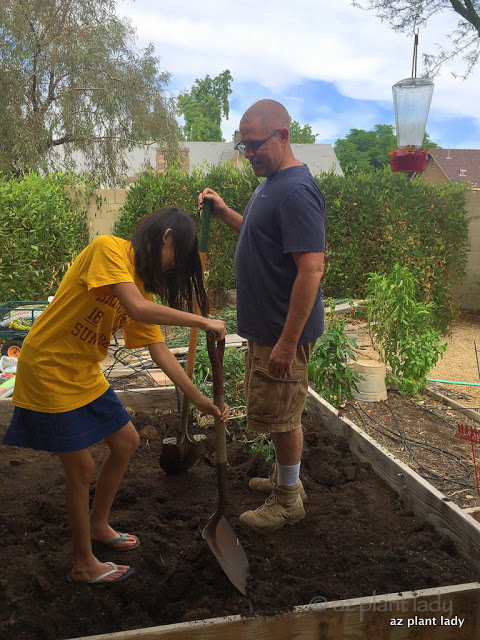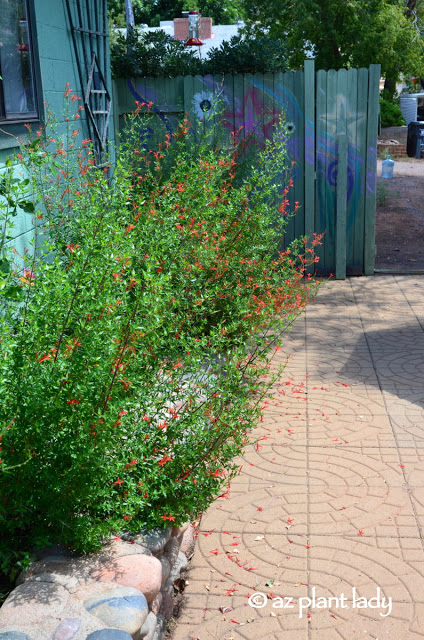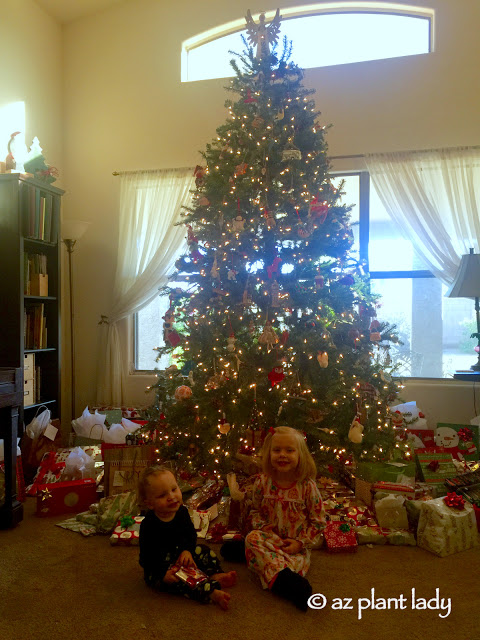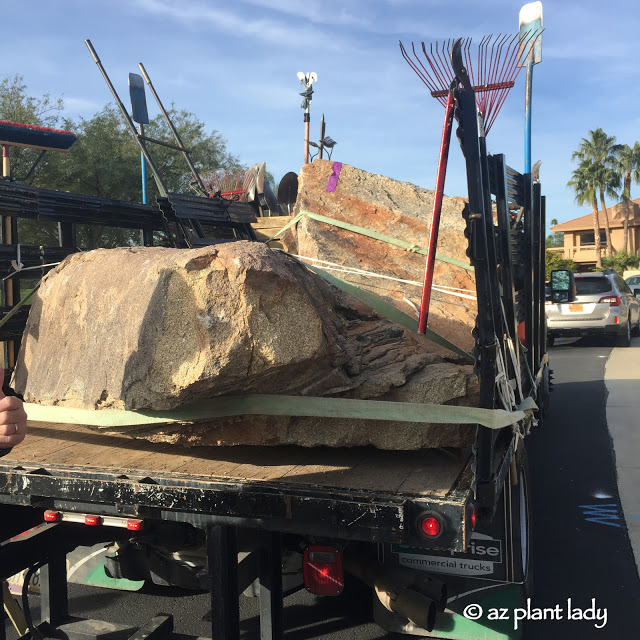Why Plant Names are Confusing
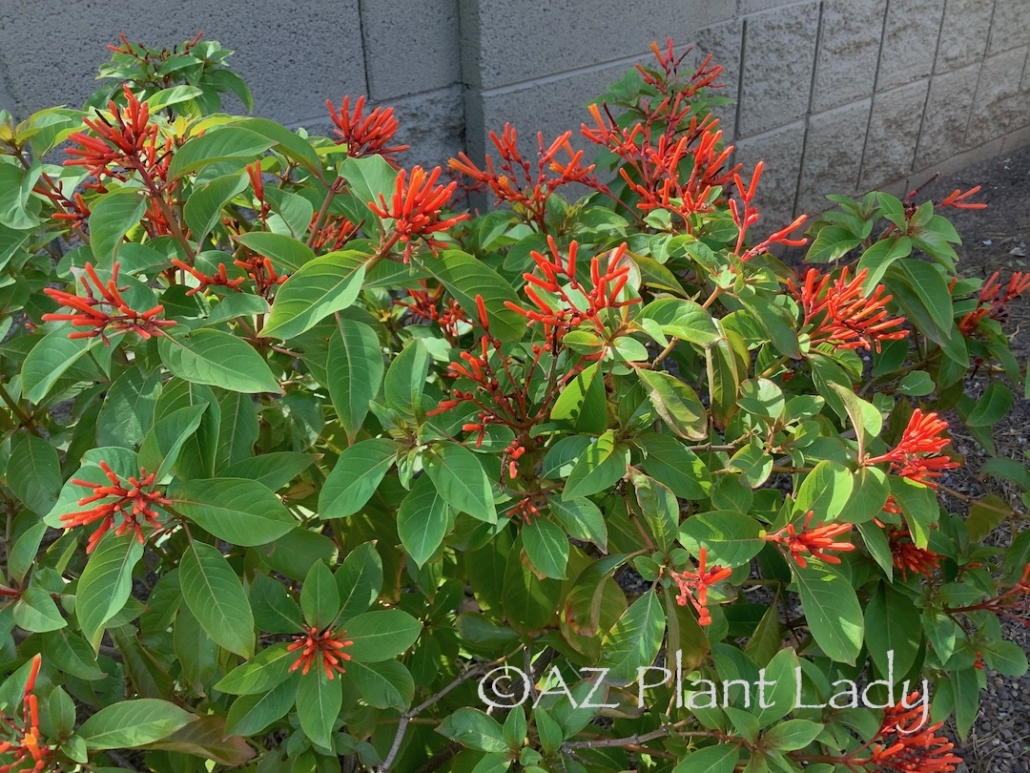
The Common Name Conundrum
Isn’t this a pretty shrub?
I saw this flowering beauty at a client’s home.
Now, when you see a plant that you like in a friend or neighbor’s yard, you probably ask them what it’s called.
My client was very proud of her shrub and called it Firecracker Bush. The problem is that two completely different plants called that name.
The Confusing Name Game
To complicate things further, this lovely shrub is also called ‘Fire Bush,’ ‘Scarlet Bush,’ and ‘Hummingbird Bush.’
Are you confused yet?
If so, you aren’t alone. Because plant names are confusing.
You see, common names for plants aren’t a reliable way to refer to plants – especially when you head out to the nursery for a particular plant. It’s a frequent mistake to come home with the wrong plant.
Embracing the Latin When Plant Names are Confusing
Botanical vs. Common Names
If you look at a plant label, you’ll notice that they come with two names – a common name and a botanical (Latin) name.
In this case, the plant’s botanical name above is Hamelia patens.
Why the Latin Matters
So, why do you need to know the Latin name of a plant? Obviously, it’s easier to pronounce the common name. But plant names are confusing, right?
Each particular plant has only ONE botanical name, unlike a common name that may refer to several different plants. Therefore, when you learn the botanical name, there won’t be any confusion about what plant it refers to.
Now, I realize it can be intimidating to try to pronounce Latin plant names. However, recognizing the botanical word for your desired plant will ensure that you are buying the right plant. Don’t worry, you don’t need to say it out loud – simply write it down.
The Beauty of Hamelia Patens
This lovely firecracker bush (Hamelia patens) has lush green foliage and produces red/orange flowers that hummingbirds love. It is cold hardy to 18 degrees F. and will suffer frost damage when temperatures dip into the 30’s, but recovers quickly in spring.
It has a naturally mounded shape and doesn’t require any shearing (no poodle-pruning). Firecracker bush grows to approximately 3-4 feet tall and wide.
In the desert garden, I find it does best in areas with filtered sunlight, making it a worthy addition to your garden.

 Noelle Johnson, aka, 'AZ Plant Lady' is a author, horticulturist, and landscape consultant who helps people learn how to create, grow, and maintain beautiful desert gardens that thrive in a hot, dry climate. She does this through her consulting services, her online class Desert Gardening 101, and her monthly membership club, Through the Garden Gate. As she likes to tell desert-dwellers, "Gardening in the desert isn't hard, but it is different."
Noelle Johnson, aka, 'AZ Plant Lady' is a author, horticulturist, and landscape consultant who helps people learn how to create, grow, and maintain beautiful desert gardens that thrive in a hot, dry climate. She does this through her consulting services, her online class Desert Gardening 101, and her monthly membership club, Through the Garden Gate. As she likes to tell desert-dwellers, "Gardening in the desert isn't hard, but it is different."